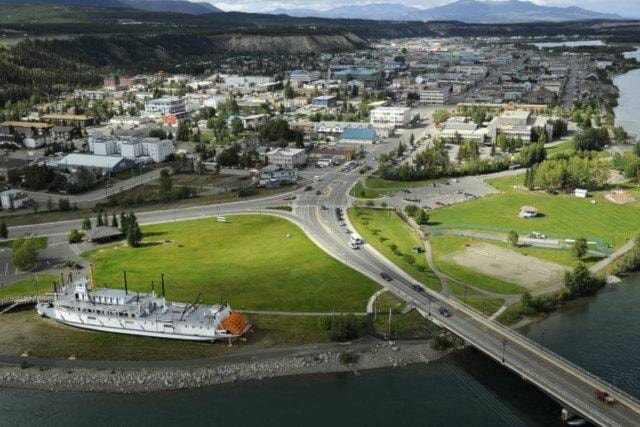Yukon has seen more population growth than any other province or territory in Canada, according to the latest census data.
On Feb. 9, Statistics Canada released its population counts by geographic classification for the 2021 census. It suggests the population of Yukon rang in at 40,232, with 31,913 people living in the census agglomeration area of Whitehorse.
That data suggests the number of people living in the Yukon jumped by 12.1 per cent in the 2021 census, which is the most growth compared to every other province and territory.
It comes as no surprise to Gary Brown, senior information officer with the Yukon Bureau of Statistics. He said Yukon has been seeing the population growing since the 2016 census and over the last five to 20 years.
“It’s obviously strong growth, as we expected,” Brown said during a Feb. 9 phone interview.
Prince Edward Island ranked second highest at eight per cent and the national average was 5.2 per cent, according to numbers crunched by the territory’s statistical agency.
Yukon’s urban centre also saw an increase. The latest data suggests the number of people living in Whitehorse grew by 13.1 per cent since the 2016 count, with 24,513 in the small population centre and 7,400 in the rural area.
The economic situation has been driving population growth in the region, Brown said, citing the low unemployment rate and the territory’s ability to weather the COVID-19 pandemic relatively well.
“In a nutshell, it’s just the economy. There’s a fair bit of jobs, and mining has helped,” Brown said.
Brown said there is “no question” that a lot of the increase can be attributed to immigration.
Immigration lawyer Ammad Anwar said immigration accounts for approximately one per cent of overall population growth each year. He said approximately 80 per cent of newcomers in the Yukon are workers and students, while the other 20 per cent are migrants from other provinces and territories.
For the most part, Anwar said, immigrants and refugees are not necessarily worried about “small things” like weather. “They do not differentiate between Vancouver or Calgary and Whitehorse, so we should welcome them, and they do play a vital role in our economy,” he said.
The most obvious evidence of overall growth is the housing market in the territory.
“The demand is outstripping the supply, and it’s driving the prices of both rent and housing prices up, so that’s the most evident one right there,” he said.
Count could climb
The latest numbers will need to be adjusted for net under-coverage over the next year to nail down the number of people who may have been missed during the 2021 count. Brown said he expects the territory’s tally could climb another five per cent or more if it matches historical trends in growth.
“The territories always have a higher net under-coverage than the provinces, and that’s just due to it’s harder to count people up here, there’s fewer people over a wider area,” he said.
The territorial formula financing will be based on the final adjusted count.
The gap is already being accounted for by groups on the ground in Whitehorse. The Yukon Planning Group on Homelessness and the Council of Yukon First Nations spent 24 hours on April 13, 2021, conducting a point-in-time survey in Whitehorse.
By their count, at least 151 people experienced homelessness on that night.
That includes 43 people who were “absolutely homeless” (38 stayed in emergency shelters and five stayed in an unsheltered location such as a car, tent or public space) and 108 people who were provisionally accommodated by transitional housing, hotels and motels, someone else’s place and public systems such as in hospital and jail. A footnote indicates some actual counts may be higher than what is reported.
Kate Mechan is executive director of the Safe at Home Society, a group that works to prevent homelessness and facilitated the count in the community. Mechan said people who are unhoused, precariously housed or couch-surfing could have been missed given that the census counts all members of a household at a physical address.
“Many social services organizations are concerned that more marginalized populations don’t get captured often because surveying or research is online or paper copies that don’t often get to people, especially if you don’t have a fixed address.”
Statistics Canada is set to release more information over the year. The demographic results of the 2021 census will likely come out in late April.
Disclosure: Dana Hatherly has previously worked in data collection for Statistics Canada.
Contact Dana Hatherly at dana.hatherly@yukon-news.com
